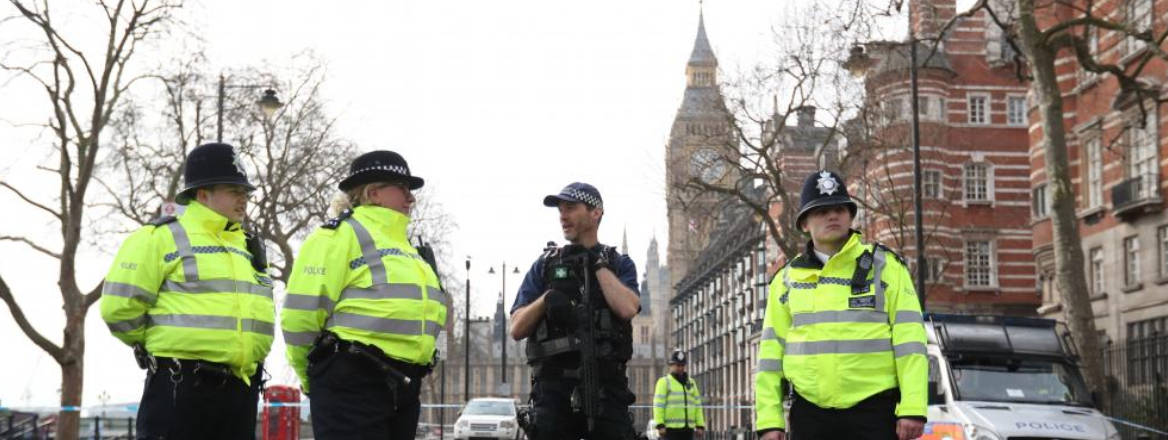London: The Latest Victim of Terrorism in Europe
The security services face an enormous challenge in preventing these types of terrorist attacks.
The wave of terrorism that has been striking Europe has reached Britain’s shores as a single attacker tried on Wednesday to storm the British Parliament in the centre of London.
Dartford-born Khalid Masood, né Adrian Russell Ajao – killed four people when he rammed his car into pedestrians on Westminster Bridge and fatally stabbed police officer PC Keith Palmer. At least 50 other people were injured, some critically.
The choice of target and the method used to conduct the attack suggest, at the very least, political intent. Daesh (also known as the Islamic State of Iraq and Syria, or ISIS) has claimed responsibility for the attack, saying that Masood was ‘a soldier of the Islamic state’.
The incident might also be linked to the wave of Daesh and Daesh-inspired plots seen in mainland Europe. However, the degree to which this reveals a substantial connection or not has yet to be uncovered.
Security forces have been preparing for such an attack for some time. Some of the 13 plots authorities stated having disrupted in the past three years showed evidence of plotting in the same direction.
It is also one that is increasingly hard to eradicate even with well-developed national surveillance and intelligence capabilities.
Protecting Open Democracy
The decision to strike at the heart of British democracy is a seemingly obvious choice: groups have long sought to strike public institutions and the Houses of Parliament are an international symbol.
The ease of striking at parliamentarians was illustrated last year with the murder of Labour MP Jo Cox at her Batley and Spen, Yorkshire, constituency surgery by right wing extremist Thomas Mair.
It was not the first time a parliamentarian had been attacked in this way – in May 2010 there was the stabbing of Labour’s East Ham MP Stephen Timms by Roshonara Choudhry in an Islamist-inspired attack. Timms was severely wounded, and Choudhry was sentenced to life imprisonment.
Democracy, by its nature, is open and its representatives accessible to the public. Yet, such openness can complicate protecting those representatives or institutions.
Nevertheless, there are some security measures that may be tightened as a result of the current events in London. The fact that the vehicle was able to mount the pavement in the areas around Parliament will raise questions about whether the protective bollards and barriers that surround the area should be further extended.
Indeed, the fact that the individual was able to get inside the parliamentary estate will undoubtedly raise questions about whether the sanitised zone needs to be extended further and more barriers erected in the vicinity.
It is also clear that authorities have discovered that Masood had featured historically in investigations. This will raise questions about why he was not prioritised for investigation and what decisions were made in other directions.
Making the Tough Choices
This is an equally difficult task. For the security services, the problem is in identifying the individual as a priority at this specific moment. It is possible that he should have been due to indicators that were missed. However, security forces are facing a complicated situation involving thousands of persons of interest while lacking the staff numbers to deal with them all.
Choices will have to made about who needs to be prioritised for deeper investigation. This necessitates more attention to some and less to others involving a process of carefully calibrated choice.
The nature of the attack also makes it hard to prevent. Attacks involving cars and knives make use of everyday tools, a tactic which in itself limits the opportunities for the security services to detect plots in advance.
This is not only a reflection of the relative difficulty of launching more sophisticated attacks, but also the fact that terrorist groups have lowered the methodology of a successful attack to this level.
Not only are the tools hard to identify prior to attack (unlike guns or explosives), but preparation time is very limited and can be hard to discern from someone’s ordinary pattern of behaviour.
Beware of an Exaggerated Response
Ultimately, it is the reaction to the carnage which ‘makes’ the attack. An exaggerated response will increase the impact of the incident and give it undue importance. On the other hand, suppressing discussion may feed a frenzy of speculation which is also harmful.
More on the attack will be heard in the days to come, shedding light on the lessons that need to be learned. The answer – as is often the case – is to step back and review processes, ensure societal resilience and brace for the potential for further incidents.
WRITTEN BY
Raffaello Pantucci
RUSI Senior Associate Fellow, International Security


